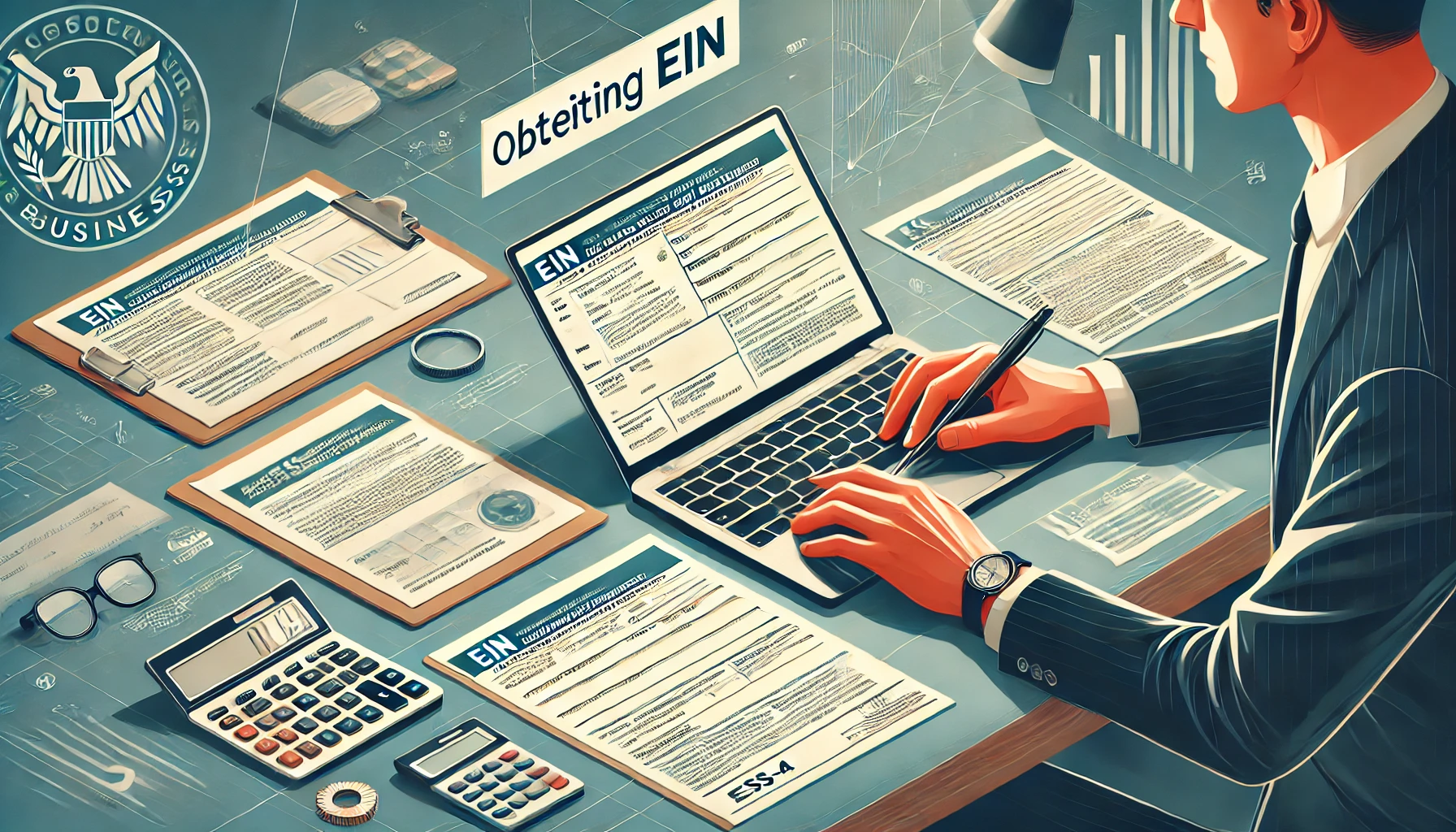Starting a small business is an exciting journey, but it involves a lot of steps, including getting the necessary legal documentation. One crucial step in this process is obtaining an Employer Identification Number (EIN), also known as a Federal Tax Identification Number in the United States. This number is necessary for tax purposes, hiring employees, opening a business bank account, and more. In this article, we’ll walk you through the process of obtaining an EIN for your small business.
1. What Is an EIN and Why Do You Need One?
An EIN (Employer Identification Number) is a unique number assigned by the IRS (Internal Revenue Service) to businesses in the U.S. This number is used to identify your business for tax purposes, similar to how a Social Security Number (SSN) identifies an individual. You’ll need an EIN if:
- You are forming a corporation or partnership.
- You have employees or plan to hire them.
- Your business needs to pay federal taxes.
- You are opening a business bank account.
Having an EIN makes your business legitimate and allows you to operate within the U.S. tax system. It is also required when filing business tax returns and applying for business licenses.
2. Who Needs an EIN?
While most businesses need an EIN, not every small business will require one. You will need an EIN if:
- You operate as a corporation or partnership: If your business is structured as an LLC (Limited Liability Company), partnership, S-Corporation, or C-Corporation, you will need an EIN.
- You hire employees: If you plan on hiring employees, even if it’s just yourself initially, you will need an EIN to comply with tax requirements.
- You file specific tax returns: Some business structures require different forms of tax filings, which necessitate an EIN.
- You open a business bank account: Many banks require an EIN to open a business account, as it helps them verify your business for tax purposes.
However, if you are a sole proprietor and do not have employees, you may not need an EIN and could use your Social Security Number (SSN) for tax filings instead.
3. How to Apply for an EIN
The process of applying for an EIN is relatively simple, and you can do it online. Below are the steps to follow:
Step 1: Determine Your Eligibility
Before applying for an EIN, ensure that you meet the eligibility criteria:
- You must have a valid Taxpayer Identification Number (TIN), such as your Social Security Number (SSN) or Individual Taxpayer Identification Number (ITIN).
- Your principal business must be located in the U.S. or U.S. Territories.
- You must be the owner or authorized representative of the business.
Step 2: Gather the Necessary Information
Before starting the application, gather the following details:
- Your business name: The official name of your business.
- Legal structure of your business: Whether your business is a sole proprietorship, partnership, LLC, or corporation.
- Owner details: The name and Social Security Number (SSN) of the owner or responsible party.
- Business address: A physical address for the business.
Step 3: Apply Online on the IRS Website
The easiest and fastest way to apply for an EIN is through the IRS website. Here’s how you can do it:
- Go to the IRS official website (www.irs.gov).
- Navigate to the EIN application page.
- Complete the online application form (Form SS-4).
- Submit the application and receive your EIN immediately.
Step 4: Apply by Mail, Fax, or Phone (Optional)
If you cannot apply online, you can still apply by other means:
- By Mail: Complete Form SS-4 and mail it to the IRS. It can take 4-6 weeks for processing.
- By Fax: If you’re faxing the form, it will take about 4 business days to receive your EIN.
- By Phone: International applicants (outside the U.S.) can apply by phone by calling the IRS at 267-941-1099.
Step 5: Confirm and Store Your EIN
Once your EIN application is processed, the IRS will provide you with your unique identification number. You’ll receive a confirmation letter, and it’s important to keep this information safe. You’ll need your EIN for tax filings, hiring employees, and other official business activities.
4. Common Mistakes to Avoid
While applying for an EIN is straightforward, there are a few common mistakes that applicants should avoid:
- Incorrect business structure: Make sure to select the correct business structure (LLC, corporation, partnership, etc.). This will affect your tax filings and future business responsibilities.
- Missing or incorrect information: Double-check that the business name, address, and responsible party details are correct.
- Applying multiple times: You should only apply for one EIN for each business entity. Multiple EINs could create confusion or delays.
5. After You Receive Your EIN
Once you’ve obtained your EIN, there are a few things you can do:
- Open a business bank account: Many banks will require your EIN to open a business account.
- Apply for business licenses: Depending on your business type and location, you may need various licenses and permits to operate legally.
- Start filing taxes: Your EIN will be used to file business tax returns. It’s important to stay on top of your business’s tax responsibilities.
- Hire employees: If your business plans to hire, you’ll need your EIN for employee-related paperwork.
6. Conclusion
Obtaining an EIN is a critical step when starting a small business. It helps you comply with tax requirements, hire employees, open a business bank account, and more. By following the simple steps outlined in this article, you can easily apply for an EIN and get your business up and running in no time. Make sure to keep track of your EIN and store it securely, as it will be necessary for many aspects of your business operations.
